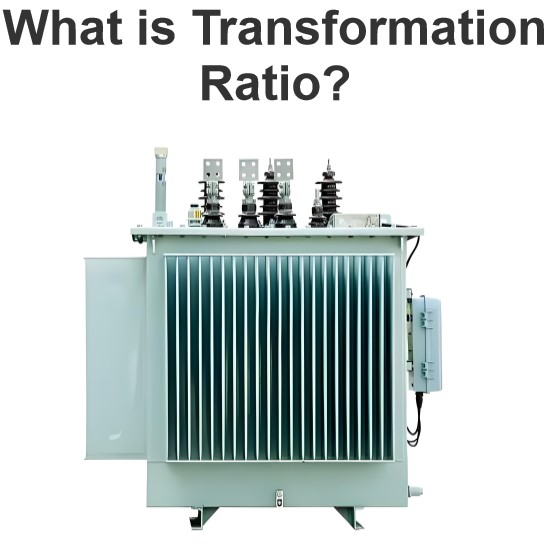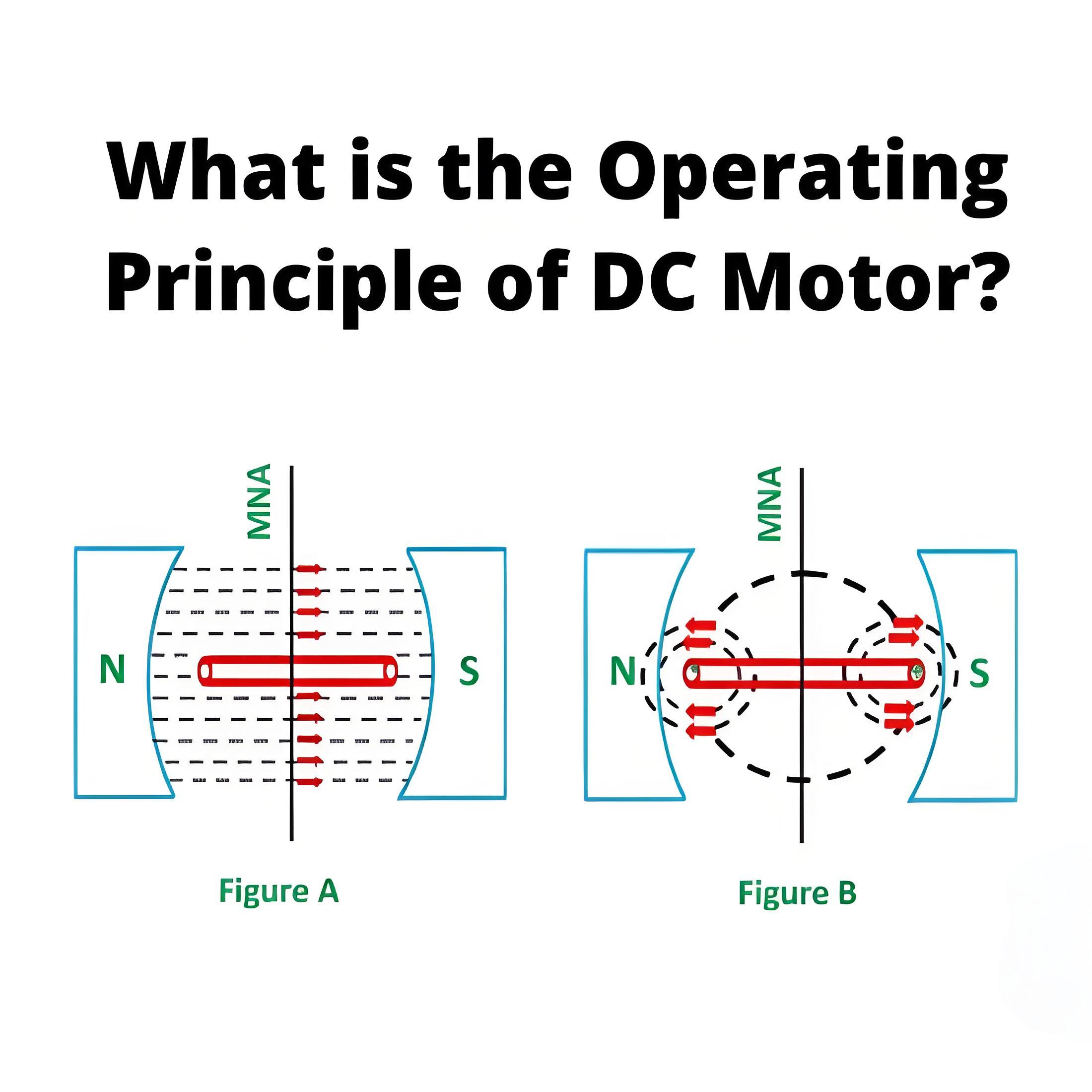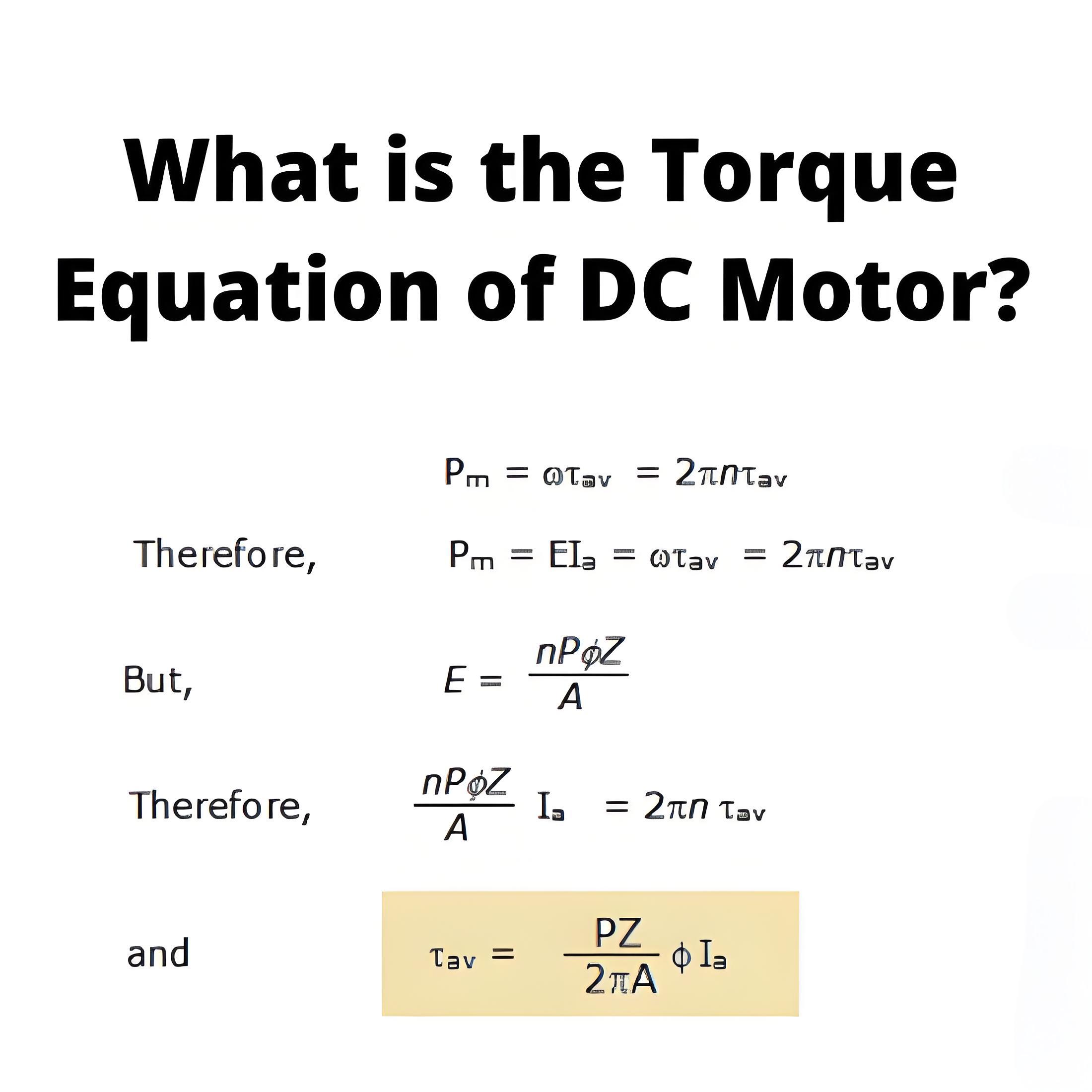Characteristics of Series Wound DC Generator
Series Generator Definition
A series wound DC generator is defined as a generator where the field windings, armature windings, and external load circuit are connected in series, causing the same current to flow through each part.
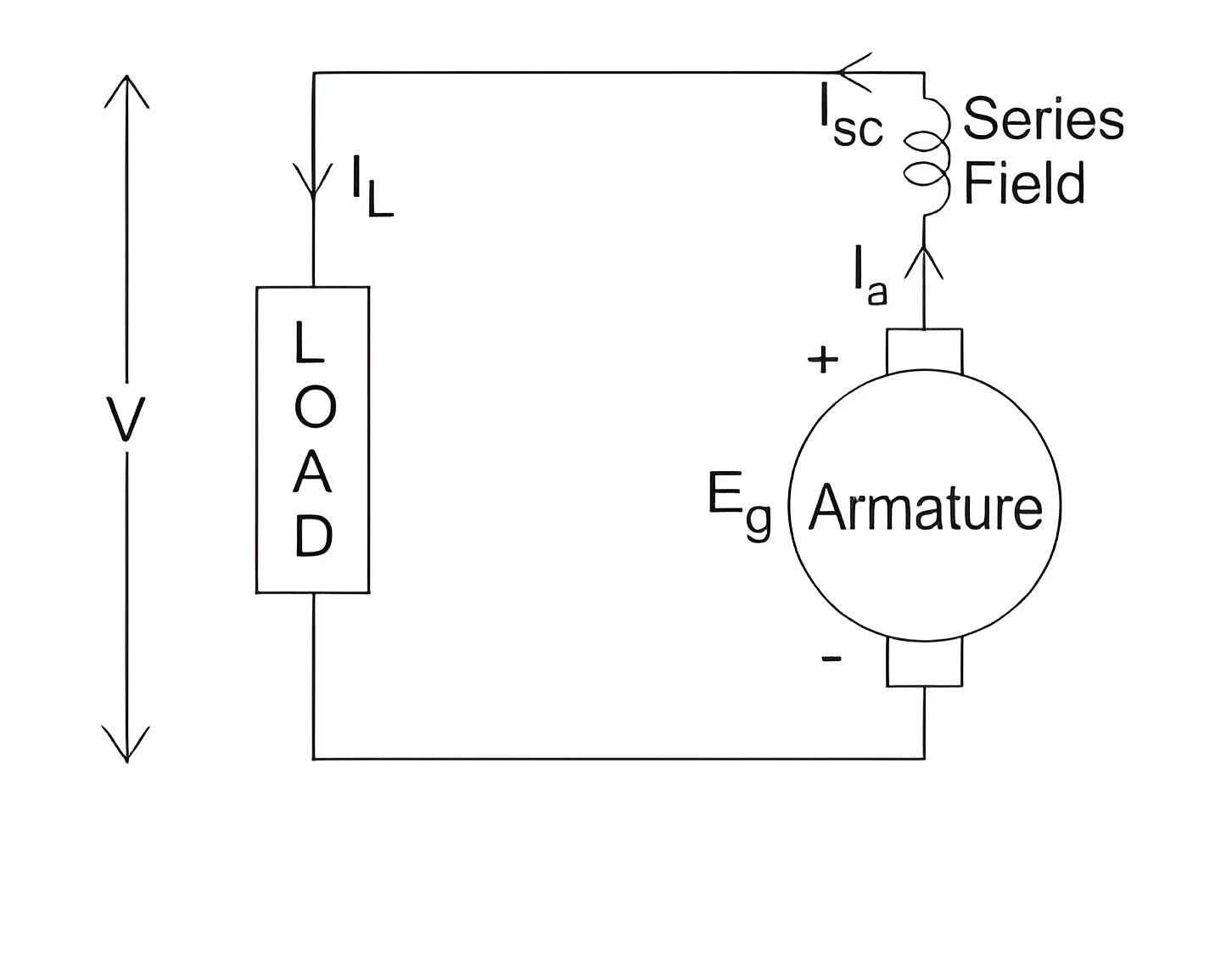
In these types of generators the field windings, armature windings and external load circuit all are connected in series as shown in figure below.
Therefore, the same current flows through armature winding, field winding and the load.
Let, I = Ia = Isc = IL
Here, Ia = armature current
Isc = series field current
IL = load current
There are generally three most important characteristics of series wound DC generator which show the relation between various quantities such as series field current or excitation current, generated voltage, terminal voltage and load current.
Magnetic Characteristic Curve
The curve which shows the relation between no load voltage and the field excitation current is called magnetic or open circuit characteristic curve. As during no load, the load terminals are open circuited, there will be no field current in the field since, the armature, field and load are series connected and these three make a closed loop of circuit. So, this curve can be obtained practically be separating the field winding and exciting the DC generator by an external source.
In the diagram, the AB curve shows the magnetic characteristic of a series wound DC generator. The curve is linear until the poles reach saturation. After this point, the terminal voltage doesn’t increase significantly with additional field current. Due to residual magnetism, there is an initial voltage across the armature, so the curve starts slightly above the origin at point A.
Internal Characteristic Curve
The internal characteristic curve shows the relationship between the voltage generated in the armature and the load current. This curve accounts for the drop caused by the armature reaction’s demagnetizing effect, making the actual generated voltage (Eg) less than the no-load voltage (E0). Therefore, the curve drops slightly from the open circuit characteristic curve. In the diagram, the OC curve represents this internal characteristic.
External Characteristic Curve
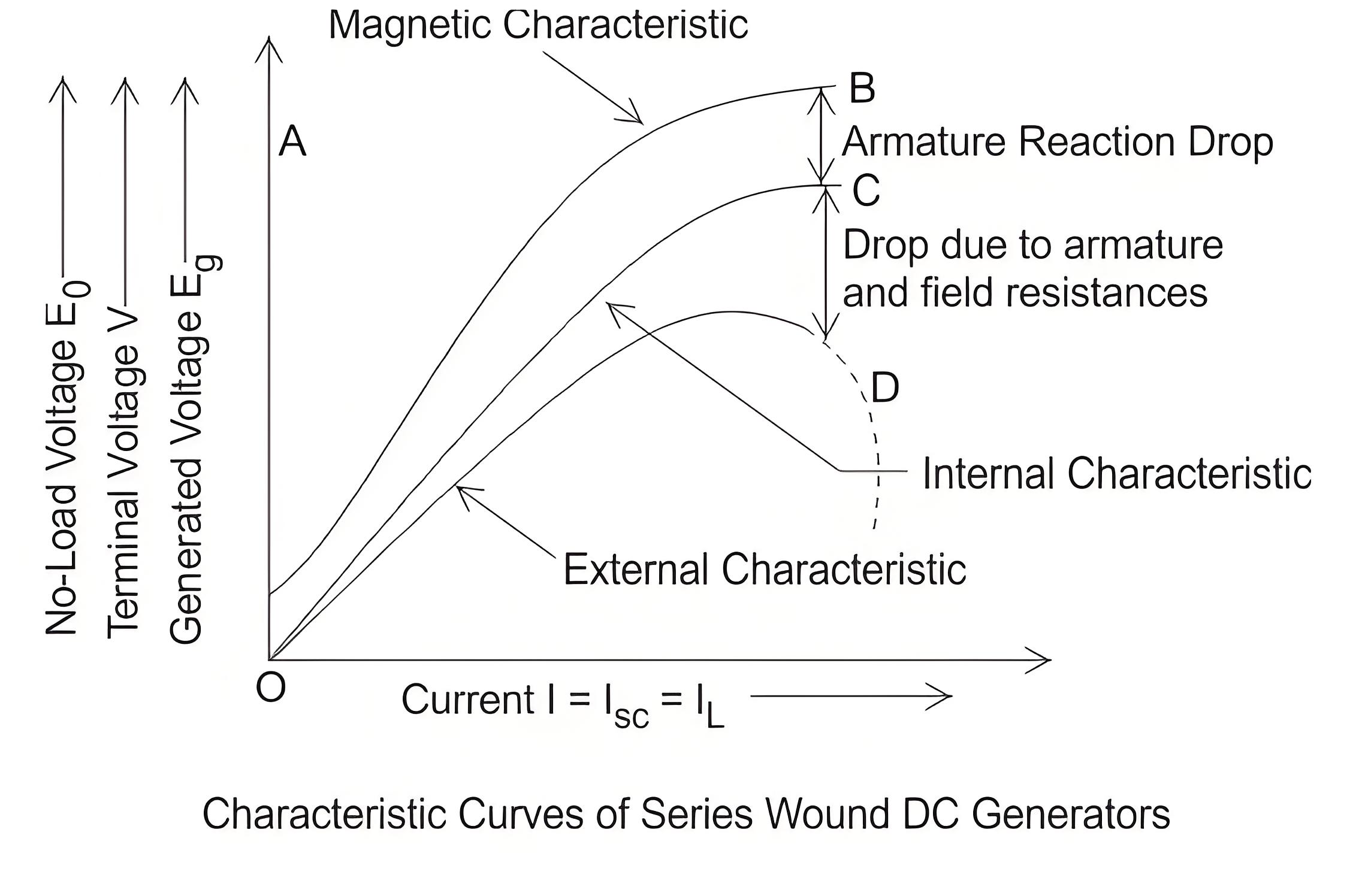
The external characteristic curve shows the variation of terminal voltage (V) with the load current (IL). Terminal voltage of this type of generator is obtained by subtracting the ohomic drop due to armature resistance (Ra) and series field resistance (Rsc) from the actually generated voltage (Eg).
Terminal voltage V = Eg – I(Ra + Rsc)
The external characteristic curve lies below the internal characteristic curve because the value of terminal voltage is less than the generated voltage. Here in the figure OD curve is showing the external characteristic of the series wound DC generator.
From the characteristics of a series wound DC generator, we can see that as the load increases (and therefore the load current), the terminal voltage initially rises. However, after reaching a peak, it starts to decrease due to the demagnetizing effect of the armature reaction. The dotted line in the figure shows this phenomenon, indicating that the current remains roughly constant despite changes in load resistance. When the load increases, so does the field current, as the field is series connected with the load. Similarly, the armature current increases as it is also series connected. However, due to saturation, the magnetic field strength and induced voltage do not significantly increase. The increased armature current leads to a greater armature reaction, causing a drop in load voltage. If the load voltage drops, the load current also decreases, as current is proportional to voltage (Ohm’s law). These simultaneous effects mean there is no significant change in load current in the dotted portion of the external characteristic curve. This behavior makes the series DC generator a constant current generator.
Constant Current Generator
A series wound DC generator is known as a constant current generator because the load current remains nearly constant despite variations in load resistance.
Welcome to our electricity community! Established to facilitate the exchange and cooperation in the electricity industry and bridge professionals, enthusiasts, and related enterprises.


